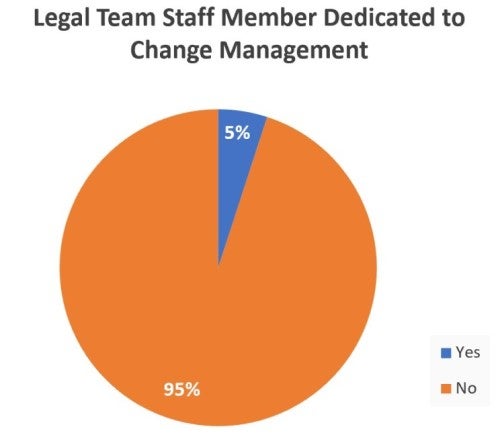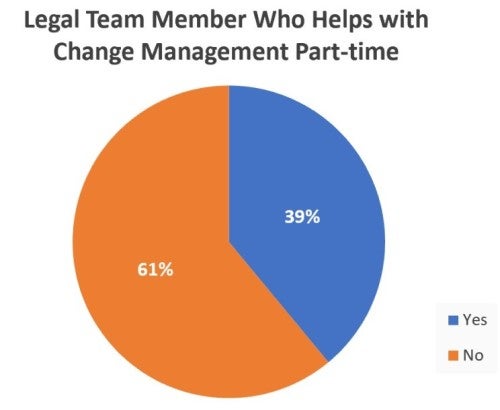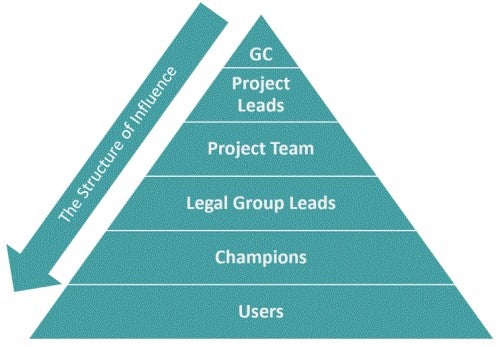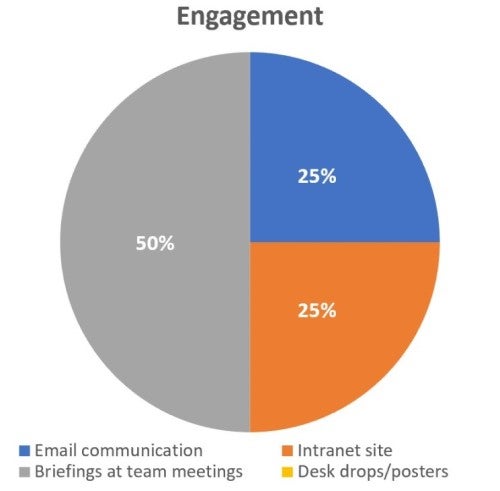
On July 9, 2019, ACC and Consilio LLC hosted the ACC Legal Operations Europe virtual roundtable featuring “ops” leaders based in Europe. Moderated by Robin Snasdell and Andrew Dey of Consillio, the panel included Simon Ferres, Legal CIO, Deutsche Bank; Stacy Walsh, 2VP, corporate legal operations, Travelers; and Ian Waterworth, head of Programme & Change, Legal COO, Standard Chartered Bank.
The roundtable was the third in this year’s series, which will continue with an in-person event, titled “Accelerate Innovation,” in Frankfurt on Oct. 15, 2019. Read on for key takeaways from the discussion, as well as the leaders’ advice for in-house counsel looking to drive change within their law department.
How far along is your company’s “level of maturity”?

Simon Ferres oversees legal technology at Deutsche Bank, and states that his organization has invested heavily in legal technology — as well as process transformation — over the last five years.

Stacy Walsh leads Travelers’ legal department’s efforts in technology and efficiency, as well as vendor and outside counsel management and communications. According to Walsh, her organization is “far along on the spectrum,” when it comes to maturity model’s scale for change management, and they are close to realizing a streamlined approach to operations.

Ian Waterworth states that Standard Chartered Bank, on a maturity model’s scale and from a change perspective, is “pretty advanced,” with the company having created several processes and governance forms.
ACC Maturity Model — Change management
The ACC Maturity Model is a framework for figuring out where your organization is on the change management (CM) spectrum.
The stages: Early, Intermediate, Advanced
Most companies start in the early stage of the spectrum, where there is no change management process in place, with change tending to be more reactive than proactive, and communication more “ad hoc” with information shared via hearsay.
In the intermediate stage, a systematic approach has been developed and applied to most projects. While change management at this stage is a known tool for success, typically only those on the project team have “buy-in.” In other words, CM is not yet a part of the company culture, but it is a part of the planning process during times when great change is being considered, and therefore communication with staff is prioritized.
In the advanced stage, standardized processes for managing change have been embedded in all company activities, and project management is used to support major initiatives and project plans. In this stage, CM is a part of the organizational and departmental culture, with effective communication in place.
What is change management?
According to ACC, change management is “a systematic process to enable an organization to embrace targeted changes in the way work is done.”
Other definitions include: “A collective term for all approaches to prepare, support, and help individuals, teams, and organizations in making organizational change.”
CM further defined, per the panel:
People are key. According to Walsh, change management is all about the people — it’s about communicating with and bringing people along on the initiative, especially technology related initiatives and those that require a lot of change. These initiatives are “always going to be dependent on the people who are experiencing them,” states Walsh.
“If you’ve spent a lot of time, money, and resources investing in a technology, product, or process, and you haven’t spent time thinking about how to bring people along, then your project is not going to be successful. People are a key component, and probably the most important part in making any change management initiative successful.”
Is change management a part of Travelers' standard project management methodology, or something done within legal?
According to Walsh, Travelers has a project management office and those professional project managers embed aspects of change management into the projects they lead for the organization. When the legal project is using a resource from the enterprise PMO, then the methodology is there. The aspects of change management that are so important to a project’s success are ones that legal make a targeted part of our project plan (e.g., separate communication plans, bringing in users at an early stage, etc.).
Remember the post-change phase
According to Waterworth, change management is an ongoing process that doesn’t stop at the point of delivery of a new system or process. He encourages people to look at what the change collectively means to everyone impacted, as well as the ongoing support needed to be successful. “Delivery management is often everything up until that point, but the impact and significance of the change — and how it affects people — can’t be missed.”
Define processes
“Change management is easiest when you are driving change to well-defined processes,” states Ferres. Apart from billing processes, corporate legal departments can sometimes fall short in this area. Ferres believes that clearly defining processes cannot be ignored. “You have to give change management the appropriate amount of focus in order to avoid the many pitfalls out there.”
Change management staffing
Audience poll results: Dedicated CM staff is rare, but many companies have part-time CM support.


Instant Roundtable Poll
Do the stats surprise the panel?
Due to the increased interest in legal technology, and the challenges in technology rollouts, the panel is slightly surprised that the numbers indicate few SME resources to effect the change needed. That said, as Legal Operations is still emerging in Europe (and generally), many companies are just starting along the continuum.
What should companies do first when implementing a new system or process?
Identify your stakeholders and management process
- Who are they?
- Buy-in from the top?
- Is it just lawyers and support staff?
- Are other areas of the organization needed to make legal change successful?
- How do you understand the level of stakeholder awareness?
The stakeholder management process includes identification of the people and/or groups in the organization who would be impacted by and involved with/influential in the change (i.e., the stakeholders). This impact will vary per person and will be both positive and negative. That said, effective management of stakeholders’ issues will play a significant role in a project’s success.
Stakeholder assessment and management tips
- Use focus groups, meetings, and surveys.
- Look for individuals with expertise and judgment.
- Consider lessons learned from past projects.
- Conduct a stakeholder analysis to identify individuals who may have the most influence and therefore need to be managed carefully and differently.
In general, stakeholders can be the project manager and team, sponsor(s), the COO for legal, practice groups, a country team, etc., as well as team members in central functions like finance and technology. Remember that lawyers are not your only stakeholders.
When identifying stakeholders, think about their level of awareness and understanding of the project, and what you can get them to commit to and advocates for (see scale below).

Working with the champions
Your end-users usually start out unaware. You want to bring them to a place of understanding, while your heads of legal, presumably those sponsoring and involved in the decision-making on the project, begin at a place of understanding. You want to bring these individuals to a place of advocacy — getting them to spread the good news throughout the organization.
“There are several roles in between that you can rely on to push people further along the spectrum: group or practice leaders, project team members, and 'champions' — people who are brought in early in the process and whom others can seek input from throughout the process, and who act as liaisons between the project team and the various practice areas. And then, by the time the project is live, they have become advocates,” states Walsh, who stresses being purposeful about assigning roles.
How important is top-down messaging?
According to the panel, having the head of legal, or the legal leadership team, communicate messages around the change is very important to a project’s success, although support from all levels is needed for a truly successful and long-term implementation.
A few suggestions:
- Be selective and note that change often requires communicating policy as well as explanatory messaging from the top. Messages like, “We are investing heavily in these new tools, and we need you to use them in a consistent way,” work well.
- Have the head of legal or general counsel deliver the message, and then engage people directly through steering committees, etc.
- Ensure leadership by example. When the general counsel and law department leaders are using the new tool, others follow suit.
Change management readiness: Is your team ready?
ACC Resources
ACC has a useful Organizational Change Management Readiness Assessment resource (requires ACC membership login). This resource includes a survey, which is intended to assist you in evaluating your group’s readiness for a proposed organizational change.
The 5 “Pillars” of good change management
- Communication,
- Sponsorship,
- Stakeholder impact and management,
- Readiness, and
- Training.
Demand management: What the gatekeepers can do
To put in place a demand management system in Legal Ops, ask your team the following questions:
- How do we receive requests/ideas for new systems and processes (the demand)?
- What processes can you put in place to vet change requests?
- How many projects can the legal team make before they experience “change fatigue”?
Your organization can only take so much change
Ferres encourages professionals to remember that “any internal function can only take so much change.” Therefore, it is important to prioritize your initiatives.
Prioritization for change: Is the change…
- Small scale — ongoing veneer of change
- Inflight projects and programs
- New demand — tech and business change within legal
You need a good process in place to manage demand. Ferres suggests thinking about the process as a “funnel,” where you invite people in the department and on the team to come along. At Deutsche Bank, Ferres and team set up a legal digitalization forum and council and made sure that the panel they formed had adequate stakeholder representation.
4 stages of the demand and change management funnel
- Where the council is focused. This is the mouth of the funnel and give us the demand entry point.
- Prioritization. What are we doing and why? It includes a light business case where capability and outcomes are discussed (not yet technology, etc.).
- “Hands on.” For example, you would run “a proof of concept” to get to a testing stage of sorts, which prepares you to create a business case with confidence about the technology and the business case, before you lead into delivery in the final stage.
- Implementation. In this final part of the funnel, the project is up, and running and you are delivering the change.
Setting priorities
Have the team meet periodically to review each phase and create a “parking lot” where you can capture ideas that may rise in priority later. That said, the advice is to focus on the fundamentals first. Think about what a logical sequence of applying the change includes, and then get hands on with the tools. In other words, try before you buy.
It’s easy to have too many initiatives going at one time. Therefore, the question is often a question of what to do and when. In order to set priorities and create your parking lot of future possible initiatives, the panel suggests identifying the problem first.
Don’t start with the solution
People can get excited about new technologies, and come up with a solution first. Ask them to identify the problem they are trying to solve, and discourage “selling a [technical] solution that’s looking for a problem.” The panel also suggests an intake form that includes a place to input the problem, who it impacts (e.g., the regions or teams), the value, etc. From the form, the problem identified can be evaluated and an appropriate approach identified.
Remind stakeholders of business rationale
Explain what the business case and rationale is for why you are making the change. Most lawyers will ask why and poke holes, which is a good thing. Have the answers: “We need to make this change because it’ll make us better and faster, and this is why and this is how we know it’ll work, etc.” Continue to remind the team of the business objective you are trying to achieve. Also, keep in mind “change fatigue” and use common sense when making big changes. People need time to adjust.
How do you get people onboard?
Again, start at the top. Typically, when the CLO is saying “this is what we’re going to do,” the rest of the department gets in line. However, if you spend the needed time and energy to lay out the case and explain why this change needs to happen (i.e., explaining the business rationale while providing a broader context for why the change makes sense and its positive effects), people are more likely to accept the change.
That said, welcome questions and actively give people the opportunity to ask them. Meet with them without resistance and remember to continue to make the case along the way, at each level. Ultimately, you need buy-in from everyone. While the approach needs to be top down, it also should be bottom up. “Getting the users excited can be infectious and gathers support for the change,” says Walsh.
Getting support for your project pyramid

Converting naysayers
Naysayers and objectors: Important pieces of the project puzzle
There will always be people in opposition to the change. The most important thing is to take the time to listen to the concerns, and to clarify the objectives of the pending change in the broader context. Below are additional strategies to manage the conversation, and hopefully convert naysayers to advocates.
What do you do?
- Communicate the benefits clearly.
- Communicate the big picture. People focus on how the change is affecting them personally, as opposed to the organization as a whole.
- Listen to the valid feedback that you need to unpack and deal with (it’s not all just naysay). This makes people feel heard and like they have a voice and input into the change.
- See if you can address their concern. If you cannot point to an immediate solution, at least the party knows they were heard; and if possible, provide assurance that the issue will be addressed in the future.
- Consider giving the project a brand/logo. This reinforces the significance of the project, subtly.
Audience poll result — Most use team meetings to communicate the change
"Which of the following has the most significant impact on user engagement for projects in your organization?"

Instant Roundtable Poll
Training
According to Simon, for training to be effective, projects leads should:
- Make sure that training is aligned to your processes, and don’t talk just about the new technology or process.
- Make the reference material easy to access. If possible, embed it in the technology.
- Think about your champions, especially in global organizations where the change needs to be communicated throughout. Get the champions involved early and throughout the process (e.g., in the testing stage and once implemented) and have them participate in training. When you bring people in early, they begin to own it and will be ambassadors who get others excited.
- Regular communication is key, as is making sure you let people know how the changes will be pushed throughout, etc.
In the end, it’s all about people
Successful change management is usually applied to new technology implementations, but it’s the people incorporating the new systems who are most important. It is critical to listen to all stakeholders, including those in Legal as well as other key departments like finance and technology. Remember to anticipate change fatigue. If your organization has recently experienced a period of significant change, perhaps a new system or process can be put off until later.
Further, when looking at a new opportunity, identify the problem or goal first and then consider the possible solutions, which again include more than just technology. Change management may start from the top down, but you need all stakeholders buy-in for effective and sustainable change.




